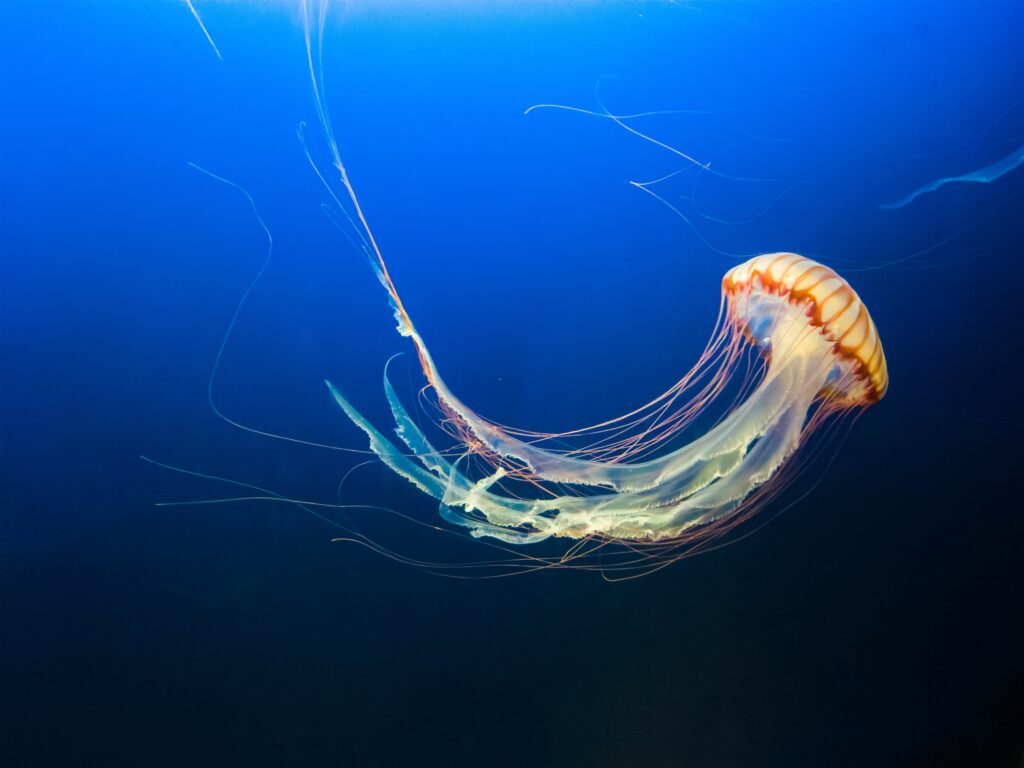
Jellyfish file photo from Unsplash | Jeffrey Hamilton
CEBU CITY, Philippines — Some jellyfish, like box jellyfish and Irukandji jellyfish, are venomous and dangerous.
Last Sunday, June 25, 2023, a 32-year-old woman from Bohol died after she was stung by a box jellyfish while swimming on a public beach in Sta. Fe town in Bantayan Island, Cebu.
Based on the Sta. Fe LGU report, the victim, Leslie Ann Madronero, dove from the cliff to the sea, suddenly felt an itch on her left arm, and was having difficulty breathing shortly after.
READ: Jellyfish sting kills woman in Sta. Fe town in Cebu
It was later discovered that Madronero had an encounter with a box jellyfish.
According to the Australian Red Cross, stings from most jellyfish can be excruciating but do not usually require hospital treatment.
Sting symptoms include immediate burning pain and red or purple whip-like weals. In major stings, breathing cessation and cardiac arrest can occur.
Treatment for most jellyfish stings
Among the worth noting first aid for most stings is to rinse the area with vinegar, for at least 30 seconds. If you don’t have vinegar, you can use seawater.
Afterward, you can remove tentacles from the skin with tweezers.
After removing the tentacles, bathe the area for 20 to 45 minutes in hot but not boiling water; if hot water is unavailable, you can apply a cold pack to help the pain, but don’t apply ice directly to unprotected skin.
If there are any signs of respiratory distress, it is best to contact the emergency hotlines in your area.
Treatment for Box Jellyfish
If you or someone you know got stung by a box jellyfish, immediately contact the emergency hotline in your area. Then, rinse the affected area with vinegar for at least 30 seconds.
Then, carefully remove the tentacles and rinse well with seawater.
Be careful not to rub the sting area or to get sand into the sting.
Moreover, it is advised to soak the affected area in hot but not scalding water to manage the pain.
Monitor the breathing and pulse of the victim, and, if necessary, you can begin to perform CPR.
Prevention is better than cure
To prevent getting stung, wear protective suits and use repellents when swimming or diving where jellyfish stings are possible.
You may also consider protective footwear, as stings can occur while wading in shallow water.
It also helps to talk to locals and get information about conditions, especially in areas where jellyfish are common.
Most importantly, avoid swimming during jellyfish season. /rcg
Sources: Australian Red Cross, mayoclinic.org
RELATED STORIES:
Box jellyfish: Scientists warn of soft-bodied killers in shallow waters